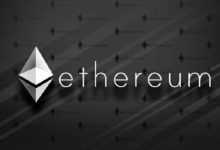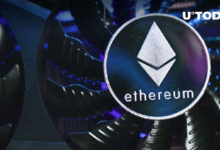Where Is the Ethereum Virtual Machine Headed in 2023? (Hint: Beyond Ethereum)

Ethereum pioneered the general-purpose smart contracting layer on top of its blockchain, so it’s no surprise that the Ethereum Virtual Machine, or EVM, for short, has attracted and retained a huge portion of Web3 developers.
What’s less well-known is that the EVM is not intrinsically bound to Ethereum. It’s already deployed on several other blockchains. With that in mind, here are three predictions for where the EVM space will grow and evolve in the coming year.
Federico Kunze Külllmer is the co-founder and director of Evmos.
A growing collection of EVMs will become increasingly specialized
The EVM is by far the most popular execution environment among smart contract developers. The proliferation of decentralized apps, or dApps, on Ethereum and Layer 2s is a testament to this vibrant building scene.
At the same time, users may be a bit disillusioned when they see that many of the dApps on these different EVMs are simply forks. The many instances of decentralized exchanges like Uniswap or Sushiswap and lending protocols like Aave are perfect examples of this phenomenon.
Read more: The Sudden Rise of EVM-Compatible ZK Rollups
These forks aren’t created pointlessly – Uniswap on Polygon generally has lower transaction costs than Uniswap on Ethereum – but when you consider that liquidity is fragmented across these multiple versions of the dApp and then consider that developers have to maintain each of these forked applications, the case for multichain deployments isn’t very strong.
As the Web3 application space, and especially decentralized finance (DeFi), matures, applications will consolidate into one or just a few instances and interoperate with other ecosystems.
In tandem with this consolidation, we’ll also see increasing specialization among the various EVMs to cater to specific kinds of applications. These are called application-specific EVMs, built to cater to categories of applications like DeFi, ReFi [regenerative finance] and infrastructure. Some of these applications will mature and migrate to their application-specific blockchains (appchains), like what thhe blockchain of blockchains, Cosmos, enables.
Already decentralized derivatives exchange dYdX is building its appchain within the Cosmos ecosystem – a decision its developers made to take greater control over the platform’s entire stack. Other Ethereum-native apps may soon follow.
Read more: Ethereum Developers Target March 2023 for Release of Staked Ether
However, different dApps have different amounts of contributor resources and developer expertise behind them, so don’t expect all of them to become appchains overnight. Building and maintaining an application, especially when it has been deployed to multiple chains, is hard enough for many teams.
So in addition to the broad, general-purpose EVMs like Ethereum, Polygon and Arbitrum, there is also plenty of room for EVMs with unique functionality. There will be more conservative EVMs (like granddaddy Ethereum) and others that build out innovative new capabilities enabling next-generation dApps.
EVMs will prioritize interoperability and composability
A key component of Vitalik Buterin’s Endgame vision for Ethereum is a flourishing multi-rollup ecosystem. This may very well pan out, but there will be much more than just EVM rollups involved. There will also be many independent but interoperable EVM blockchains, some of which, like Evmos, are going to develop unique, extended EVM functionalities.
This expanding collection of EVMs will be diverse and will see the most value creation when they’re fully composable. This would allow dApps on one chain to use and interact with dApps deployed on other chains, effectively creating cross-chain “money legos.” In my mind, this is how Ethereum scaling (both mainnet and L2 rollups) and Cosmos, each of which has seen rapid growth, will come together in a greater Interchain.
Ethermint will become the preferred library
Developers will converge on solutions that enable them to launch new EVM blockchains as easily as possible. An open-source EVM library like Ethermint, which is built for interoperability, great developer experience and extensibility, fits that bill perfectly. (Full disclosure: Evmos leads the development and maintains the Ethermint library.)
The beauty of Ethermint is that it brings together the EVM and the Cosmos SDK [software development kit]. This means that blockchains built with Ethermint can enable EVM smart contracts to use the core Cosmos modules.
I’ve already touched on the importance of interoperability, and IBC, the non-custodial bridging protocol that has made Cosmos famous, is just one of many unique capabilities enabled by Cosmos SDK modules that Ethermint can allow dApps to leverage.
Read more: Ethereum’s Rollup Race: What is a ‘True’ zkEVM?
Additional building blocks like Interchain Accounts and Interchain Queries are making cross-chain app development a reality. These two modules allow chains to relay and act on messages, as well as control assets on each other’s chains.
For example, a cross-chain version of vault-style products like Yearn could move/trade/LP assets on interconnected chains on Cosmos. This is the tip of the iceberg when it comes to IBC-enabled dApps, and I’m excited to see this design space explored.
The future is bright for EVMs. They’re proliferating, they’re expanding their feature sets, and they’re bringing together Ethereum and Cosmos. In 2023 we’ll see years of infrastructural development bring this to life for users as EVM applications become more powerful and more connected than ever before.






 Bitcoin
Bitcoin  Ethereum
Ethereum  Tether
Tether  USDC
USDC  Dogecoin
Dogecoin  TRON
TRON  Cardano
Cardano  Chainlink
Chainlink  Stellar
Stellar  LEO Token
LEO Token  Bitcoin Cash
Bitcoin Cash  Hedera
Hedera  Litecoin
Litecoin  Monero
Monero  Dai
Dai  Cronos
Cronos  OKB
OKB  Ethereum Classic
Ethereum Classic  Gate
Gate  VeChain
VeChain  Cosmos Hub
Cosmos Hub  Algorand
Algorand  KuCoin
KuCoin  Stacks
Stacks  Maker
Maker  Tether Gold
Tether Gold  Zcash
Zcash  Theta Network
Theta Network  IOTA
IOTA  Tezos
Tezos  TrueUSD
TrueUSD  NEO
NEO  Polygon
Polygon  Dash
Dash  Decred
Decred  Synthetix Network
Synthetix Network  Zilliqa
Zilliqa  Qtum
Qtum  0x Protocol
0x Protocol  Basic Attention
Basic Attention  Siacoin
Siacoin  Holo
Holo  Ravencoin
Ravencoin  DigiByte
DigiByte  Status
Status  Enjin Coin
Enjin Coin  Nano
Nano  Ontology
Ontology  Hive
Hive  Waves
Waves  Lisk
Lisk  Numeraire
Numeraire  NEM
NEM  Pax Dollar
Pax Dollar  Steem
Steem  BUSD
BUSD  Huobi
Huobi  OMG Network
OMG Network  Bitcoin Gold
Bitcoin Gold  Ren
Ren  Bitcoin Diamond
Bitcoin Diamond  Augur
Augur  HUSD
HUSD